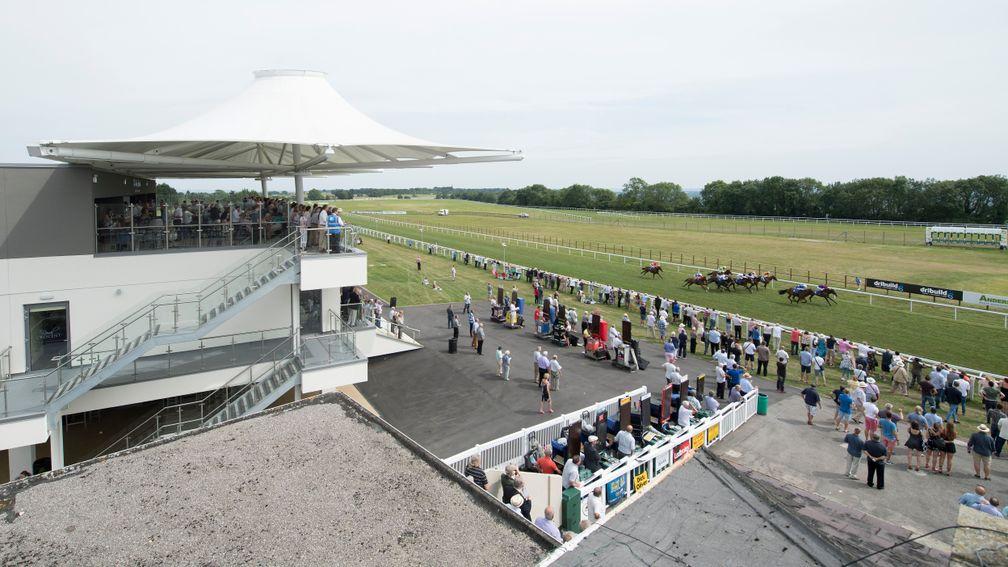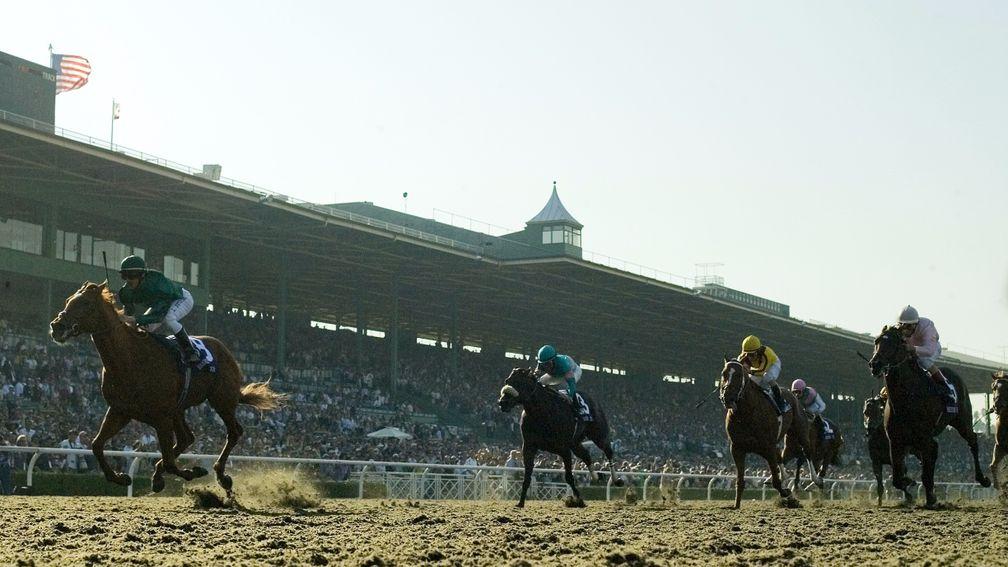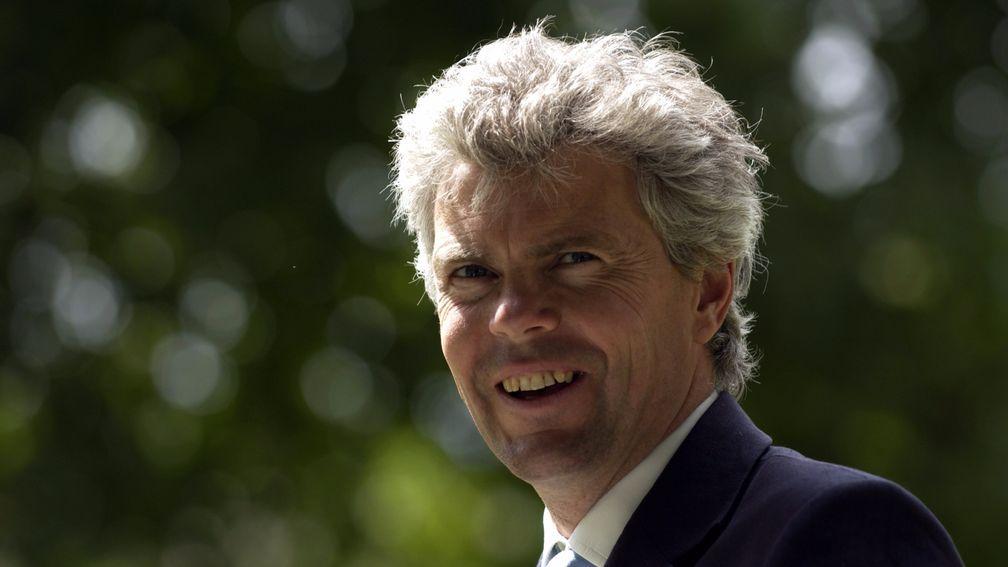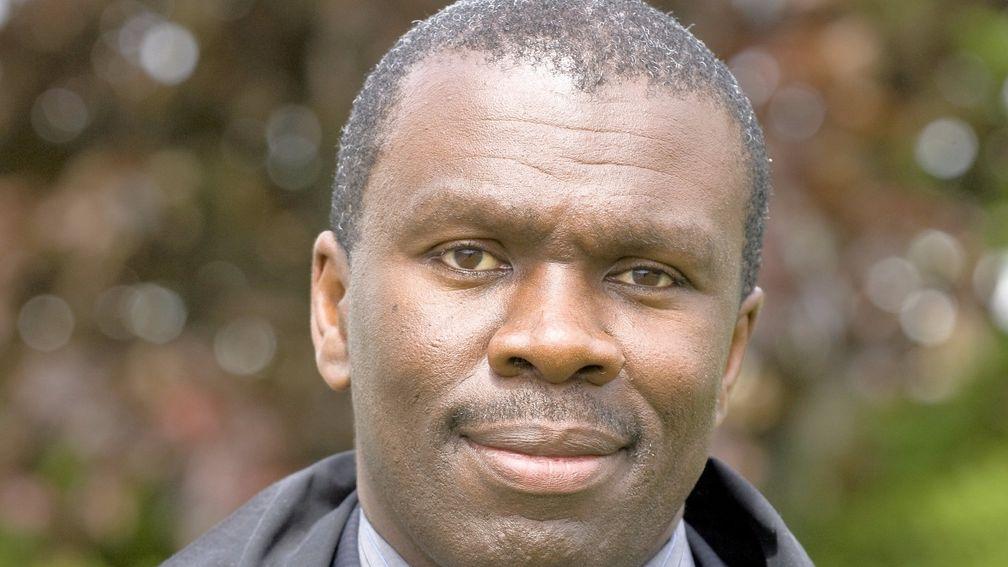Julian Muscat asks if racing’s move away from fast ground has softened the breed

First published on Thursday, August 11, 2016
The five-day entry system makes an ideal vignette of the influence the going exerts on every-day racing in Britain. It affects horsemen and punters alike.
Prevailing easy ground, coupled with the five-day weather forecast, will see trainers enter horses largely proven in such conditions. Unless conditions change, the 48-hour declaration stage will see further consolidation of that thinking. And on raceday, punters make their selections with track conditions uppermost in their minds.
In other words, the state of the ground is the single most important consideration for the human element within racing. But what about the horses?
All animals adapt to their environment and racehorses, a man-made species, are no different. If racing was only ever staged on fast ground, the racehorse would physically adapt itself over several generations in tandem with those physical demands.
The same would be true of racing on perpetually soft ground. Horses with big hooves and high knee actions, usually an impediment on fast ground, would be in vogue. And this would have a dramatic effect on the stallion ranks. Those whose progeny tended to excel on soft ground would be all the rage, with commensurate, steep declines in the value of ‘fast-ground’ sires.
For evidence of this, we need to consider the recent US experiment in which synthetic surfaces replaced traditional dirt – notably the two Breeders’ Cups run at Santa Anita in 2008 and 2009. In those years Vale Of York, Muhannak, Man Of Iron and Raven’s Pass all won races on the new Pro-Ride surface.
Suddenly the home fortress was under siege from European ‘turf’ runners who were better suited to Pro-Ride than America’s dirt champions. Alarm bells rang loudly after Curlin could finish only fourth behind Raven’s Pass in the 2008 Classic. All those Kentucky stallions worth eight-figure sums on the back of their dirt prowess were facing huge write-downs. The experiment folded.

The BHB issued a directive in January 1998 that Flat racecourses should aim to provide good to firm ground because of concerns over racehorse welfare on firm ground.
Thus far, watering of Britain’s racing surfaces has not had a dramatic effect on the thoroughbred – although some believe the long-term implications are serious. This paper’s Saturday columnist, jockey-turned-trainer Richard Hughes, is among them.
Two years ago, after a horse slipped up and lost its life at Warwick, Hughes wrote: “We are finally paying the price for year after year of excessive watering. [This] is not just damaging racecourses but also racehorses. I am not exaggerating when I say it is weakening the thoroughbred breed.
“As we increasingly race horses on softer ground than was for centuries the case, we are softening up horses at the same time. Fast ground is not dangerous, but there is a danger to the breed if we never let horses run on it. It did them no harm in the past and it would do them no harm in the future.”
Some trainers maintain racehorses are not as sound as they once were. Much of the ‘old-fashioned’, pre-season conditioning programme for horses in training is no longer the way it was. Henry Candy, for one, lamented the fact horses no longer do weeks of roadwork in advance of taking to the gallops.
Hours spent walking on Tarmac strengthens bone, tendons and develops muscle tone, although equipment advances, together with stable lads now having to look after more than their two, have altered the contemporary trainer’s approach. The vast majority instead use horse-walkers to lessen the load.
But that’s not just a time-saving device, according to veterinarian David Dugdale, managing partner at the Newmarket Equine Hospital. “It wasn’t ideal having horses slipping around on roads and falling to their knees,” Dugdale says, “and we have to remember roads have become much busier over the years.
“Modern horse-walkers have firm but safe flooring,” he adds. “Trainers realise the benefits, which is why the practice of walking horses on roads is really a thing of the past.”
Dugdale disputes the idea that contemporary thoroughbreds are not as sound as their forebears. He maintains veterinary advancements, particularly in the available tools, mean horses today are much less likely to suffer serious injury.
“The BHA keeps track on things such as catastrophic injuries on the racecourse and the frequency of such injuries is decreasing,” he says. “It is now much easier to detect a stress fracture in a horse, which might otherwise have continued to run and done itself much greater damage. And watering, too, has played its part. The risk of injury has to be greater when horses run on very fast ground.”
BHA statistics do indeed back up Dugdale’s point and its position is clear. BHA media manager Robin Mounsey says: “The fatality rate in British racing has fallen by around a third in the last 20 years to 0.2 per cent of all runners, and the most critical factor in this decline can be attributed to racecourses producing better, safer ground.”
This makes sense, although the frequency with which tracks are watered arguably increases the prospect of horses encountering false or slippery ground – especially when rain falls unexpectedly.
“You do more damage to a horse on false ground than on firm ground,” says trainer Hughie Morrison. “When courses are over-watered you get a layer of soft ground on top of much faster ground underneath.”
Morrison agrees most horses today don’t care for fast ground, largely because they are not sufficiently hardened to it. Yet this gives rise to the chicken-and-egg situation. The advent of all-weather gallops, now a standard component within any training set-up, means horses are rarely exposed to galloping at home on firm turf. They are therefore ill-equipped to deal with it on the racecourse.
“A large part of training horses is keeping them sound, so we use the kindest surfaces we can find at home,” Morrison says. “But our turf gallops here never get rock-hard; they are fantastic. Even soft-ground horses love it.”

Like Hughes, Morrison believes racing on watered ground has long-term consequences. “By always racing on good ground or the all-weather, you’re not identifying the soundest horses at the expense of the others,” he says. “It’s a logical conclusion that you’re weakening the racehorse by not breeding from the soundest stock.”
However, he adds some caveats. “If you look at the overall picture, some courses would be unraceable without watering in summer,” he says. “Watering allows us all to have more runners and it would be much harder to train horses in summer without all-weather surfaces, so we can’t complain.
“But the underlying issue now is the state of our tracks,” Morrison adds. “The turf has gone. We have got to the stage where it is mud with grass on it, and that turns to concrete in dry weather.
“There was plenty of cover when horses raced on fast ground years ago. Old-fashioned turf had roots that were thicker and broader than grass and that created a natural cushion for horses. All this watering has weakened the roots. It would be very difficult to turn the clock back, because it has gone too far.”
Of course, any weakening of the breed cannot solely be attributed to the watering issue. Other factors have had considerably more influence, among them the bloodstock boom of the 1980s that led breeders to produce horses for the commercial market, rather than adhere to long-established values.
The point is amplified by John Gosden, who maintains racehorses are not as sound as when he was assistant trainer to Sir Noel Murless in the early 1970s.
“If you’re breeding to race, you have to operate by Darwinian rules,” Gosden says. “If you find horses too soft-boned, wrong in their wind, or with bad knees, you tend to cull them.
“Now, the commercial aspect is such that if someone has a half-sister to a good horse, even if she can’t breathe or had chronic problems, she’ll still be put to a stallion because the progeny might make money at the sales. Its Derby day comes not on the racecourse, but when it is sold as a foal or yearling.”
Commercial imperatives have also influenced the way British racecourses operate. Tracks that regularly produce fast or firm ground are likely to suffer from small fields. And it makes little sense to serve up firm ground when the vast majority of horses are not exposed to it at home.
Indeed, there were times when the turf at some of our premier establishments was too firm for trainers to risk galloping their horses. In the sweltering summer of 1976 Jeremy Tree, then resident at Beckhampton, moved his autumn double horses to Newmarket in search of kinder terrain. Intermission and John Cherry subsequently rewarded Tree’s initiative by winning the Cambridgeshire and Cesarewitch respectively.
Bath is the only racecourse in Britain that does not water. It’s a pity others do not follow suit, since firm-ground horses are just as much specialist operators as horses who thrive in the mud. Nature ensures that heavy-ground horses will always have their day, yet when nature gives firm-ground horses their chance, the taps are turned on.
However, whether there are genuine implications for the strength of the breed depends on who you talk to. Dugdale and his team of vets have been overseeing racing at Newmarket for two decades in addition to being active among the town’s training fraternity. He remains unconvinced.
“In my experience the soundness of the racehorse has not changed at all over the last 20 years,” he says. “It’s not even a topic of conversation among trainers in the town. We can say that horses are more precocious. There are fewer unraced three-year-olds than in the days of the owner-breeder, but equally, the feeding and management of young horses today is so much better that it was.”
Dugdale acknowledges that different racing surfaces tend to promote different injuries. “For instance, in all-weather racing we are seeing more sesamoid fractures,” he says. “But it’s not really possible to be definitive about the effect of the ground on a racehorse. There are so many other factors.”
A specific example is the way Andrew Cooper, clerk of the course at Epsom, has dispelled trainer concerns about running horses in the Derby by deploying a judicious watering policy. The undulating chalk downland at Epsom is like a natural sieve, and a succession of Derbys run on fast ground in the 1990s took an exacting toll.
In 1995 Pennekamp, the hot favourite, broke down so badly that he never ran again. The following year Shaamit won for William Haggas but victory took a heavy toll. “The day after the Derby we were full of joy when he was about to be walked out of his box,” Haggas recalls. “But when we trotted him up he couldn’t put one leg in front of the other. The horse never really recovered.”
In such circumstances, taking the sting out of an undulating racing surface has to be welcome. In others, where over-zealous watering can render the ground false, it is plainly detrimental. Yet if the thoroughbred really is a weaker species than it was decades ago, when watering became standard practice, there will have been more tangible reasons for it.
In any case, if those who maintain the breed has suffered as a result of watering are right, they can simply add that to the list of other misdemeanours perpetrated by contemporary breeders in search of a fast buck. They include profuse inbreeding to Northern Dancer and his clan, horses who thrived on medication, horses unsound of limb, horses who bled, horses with wind infirmities and horses who were e simply too slow to win a race.
Watering - a thorny issue for punters
David Baxter gets the verdict from those who put the money down
Watering is a hot topic among horsemen – and also among punters.
A common gripe for punters is when the going turns out to be softer than advertised and watering is perceived to have played a role.
The difference in the going is sometimes not revealed until after the first race, when jockeys have ridden on the surface, which does not help punters who have placed bets in advance and or on the basis of erroneous information.
Racing Post tipster Richard Birch, writing on Tuesday, said: “Watering should only be allowed to promote grass growth, not to radically alter the going, which happens on a depressingly regular basis at some tracks.”
Professional punter Ken Pitterson believes an independent body to monitor the going and provide an accurate description would be a welcome addition to British racing.
“You’ve done all your homework and then you get to the course and find the clerk has overwatered and it’s softer than you anticipated,” Pitterson says. “I’ve got no argument with watering to maintain the ground, but I hate it when they water and change the ground.”

Pitterson thinks there is a tendency for clerks to reach for the sprinklers too quickly, and adds: “What annoys me is with the summer we’ve had there’s been a lot of rain and a lot of soft ground. As soon as we get good to firm in the ground, clerks of the course water, which doesn’t give fast-ground horses a chance.
“In the height of summer you expect it to be fast ground. The soft-ground horses have had their chances at the start of the season.” Pitterson adds: “Someone who isn’t attached to the racecourse would give everyone an independent view of what the ground is like. I think that would be fairest.”
Like Pitterson, Simon Rowlands of the Horseracing Bettors Forum, a body launched by the BHA in 2015 to reflect the views of punters, would advocate an independent body to oversee the going. He says: “Confidence in the system might be improved if there was an independent way of verifying whether the ground was actually as described.”
Regarding watering specifically, he adds: “We just ask that clerks of the course stick to the directive given by British racing rather than trying to take it one step further and ensuring something other than good, fast ground.
“The consequences of overwatering, particularly if there is rain, unexpected or otherwise, can mean a very different going to that which was anticipated and a host of non-runners, which will be harmful for punters and for betting more widely.”
James Pyman looks at stallions whose progeny show marked going preferences
Members can read the latest exclusive interviews, news analysis and comment available from 6pm daily on racingpost.com
Published on inRP Classics
Last updated